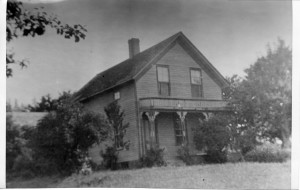 In a precedent-setting decision, the Oregon Court of Appeals this morning issued a legal opinion that will pave the way for the demolition of a yet-to-be-known number of local landmarks across Oregon. The case, Lake Oswego Preservation Society v. City of Lake Oswego, challenged a Lake Oswego City Council interpretation of a provision of the state’s 1995 “owner consent” law that allowed for the removal of historic designation from the 1855 Carman House. The February 4 decision almost certainly means the landmark house will be demolished.
In a precedent-setting decision, the Oregon Court of Appeals this morning issued a legal opinion that will pave the way for the demolition of a yet-to-be-known number of local landmarks across Oregon. The case, Lake Oswego Preservation Society v. City of Lake Oswego, challenged a Lake Oswego City Council interpretation of a provision of the state’s 1995 “owner consent” law that allowed for the removal of historic designation from the 1855 Carman House. The February 4 decision almost certainly means the landmark house will be demolished.
The Court’s decision comes after a year and a half of public hearings and legal appeals regarding the fate of Lake Oswego’s oldest house. In August 2013, the owner of the Carman House applied to the City for removal of the landmark status that had been imposed on the property in 1990 against the will of a previous owner. The Historic Resources Advisory Board denied the request, but the City Council subsequently found that the owner was “entitled per ORS 197.772(3) to require the city to remove the historic designation from the subject property.” ORS 197.772, also referred to as the “owner consent” law, reads:
A local government shall allow a property owner to remove from the property a historic property designation that was imposed on the property by the local government.
The Lake Oswego Preservation Society appealed the City’s decision to the Land Use Board of Appeals (LUBA), arguing that “a property owner” referred only to the owner at the time of designation. LUBA agreed, setting a precedent favorable to preservation. The property owner subsequently appealed the LUBA decision to the Court of Appeals.

decision regarding Oregon’s owner consent law paves
the way for the 1855 landmark house to be demolished
(Photo courtesy Lake Oswego Library)
Today’s Court of Appeals decision reverses LUBA’s interpretation of state law, finding that “the legislature intended to allow any property owner that had a local historic designation forced on their property to remove that designation.” It is unknown how many historic properties beyond the Carman House this decision will impact, but it represents a step backwards in the protection of Oregon’s locally designated historic landmarks. The decision can be appealed to the State Supreme Court.
Restore Oregon staff attended all of the hearings related to this case, providing testimony and support where appropriate. While the decision is a disappointing one, the herculean efforts of the Lake Oswego Preservation Society and attorney Daniel Kearns are deserving of our recognition and appreciation.


One Reply to “Appellate Court Decision Weakens Protections for Oregon Landmarks”
Comments are closed.